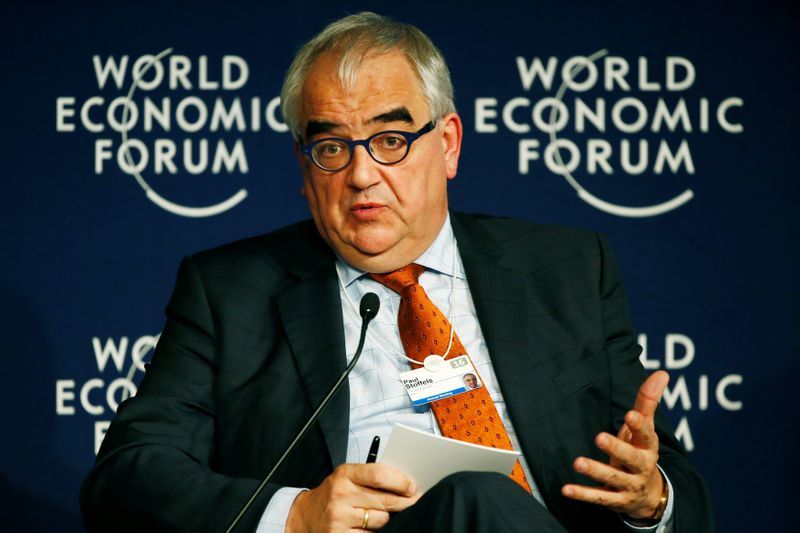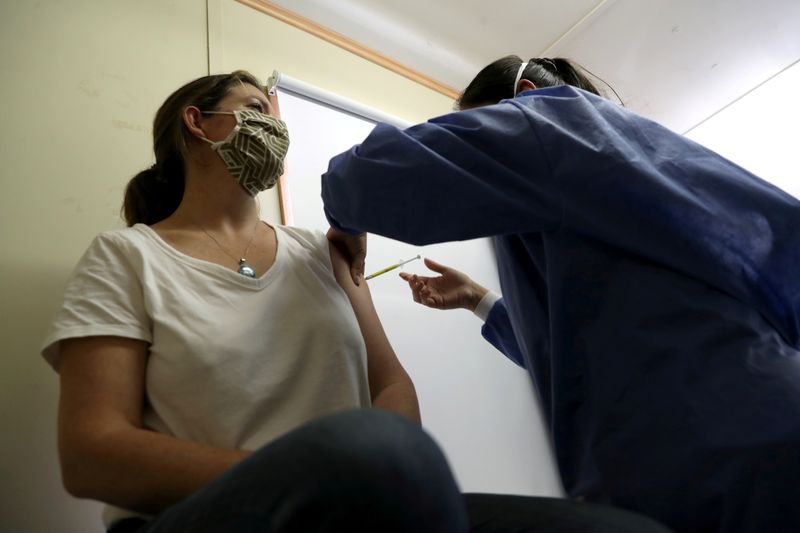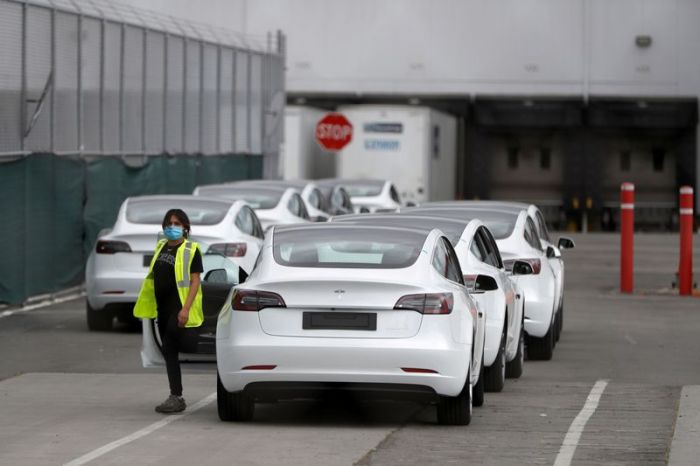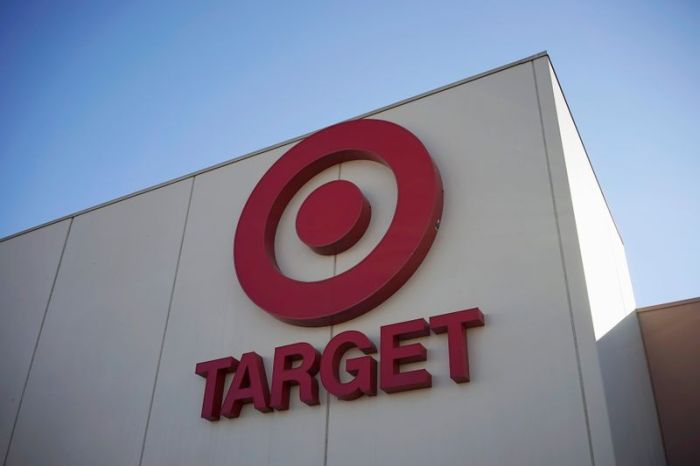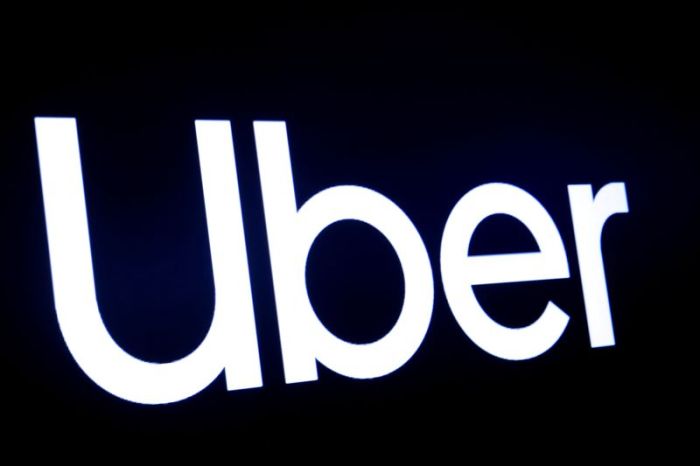CHICAGO (Reuters) – Johnson & Johnson is on track to roll out its single-shot coronavirus vaccine in March, and expects to have clear data on how effective it is by the end of this month or early February, the U.S. healthcare company’s chief scientific officer said.
Dr. Paul Stoffels in an interview on Tuesday also said J&J expects to meet its stated target of delivering 1 billion doses of its vaccine by the end of this year as the company ramps up production.
Stoffels said it was premature to say how many doses would be available in March, presuming the company receives emergency authorization from the U.S. Food and Drug Administration.
The New York Times reported earlier on Wednesday that J&J was experiencing manufacturing delays that would reduce the number of doses on hand initially.
“We are aiming for 1 billion doses in 2021. If it is a single dose, that means 1 billion people. But it will be in a ramp-up throughout the year,” Stoffels said.
Johnson & Johnson’s vaccine is being produced in the United States, Europe, South Africa and India with the help of contract manufacturers in order to build capacity.
“It’s a few weeks too early to be giving final numbers on what we can launch in the first couple months,” he said.
EXPECTATION FOR HIGH EFFICACY
Moncef Slaoui, chief adviser for the U.S. Operation Warp Speed vaccine development program, said on Wednesday the vaccine could show efficacy at or above 80%.
That would be below the efficacy of about 95% achieved in trials of already authorized vaccines from Pfizer Inc with BioNTech SE and Moderna Inc, but well above the 50% benchmark for approval set by regulators.
It also has the advantage of being a single-shot vaccine, which means it can protect more people faster, and without the cold storage requirements of the other vaccines.
Stoffels said the company set an efficacy target at 60%, but internally has been shooting for at least 70% to 80%.
“We are very confident that the vaccine will be much higher than 60%,” he said, adding that the “aim is for the highest levels, hopefully closing in on what Moderna and Pfizer are doing.”
Interim results from the company’s Phase I/II study, published on Wednesday in the New England Journal of Medicine, have helped boost that confidence.
The study showed that 90% of 805 volunteers aged 18 to 55 developed protective antibodies 29 days after a single dose, and that increased to 100% by day 57. The study is ongoing, but the protection has lasted 71 days so far.
Similar data in participants over age 65 will be available in late January.
The study also evaluated the effect of two doses of the vaccine given 56 days apart, and found the booster led to more than double the level in neutralizing antibodies against the virus.
Side effects such as fever, muscle aches and injection site pain, were tolerable and resolved quickly.
Stoffels said the interim data, combined with monkey studies published in the summer showing strong protection against disease and transmission after a single dose, increased his confidence in the vaccine.
“The likelihood that we can now translate this into humans in our Phase III study hopefully is very high,” he said, adding, “We’ll see in a few weeks.”
Although J&J’s clinical trial protocols allowed for an early look at the data after 20 people became infected by the novel coronavirus, the company intends to deliver data on at least 154 confirmed cases – the target needed to fully assess the vaccine’s efficacy – when it releases results. That should come in the last week of January or the first week of February, Stoffels said.
The U.S. Food and Drug Administration requires at least two months of safety data on half of the study participants to ensure no unexpected side effects crop up. The company crossed that two-month threshold earlier this month.
“That point came so close to the final analysis that we decided not to do an interim analysis,” Stoffels said.
J&J plans to seek emergency use authorization from the FDA based on the study of the vaccine as a single shot, Stoffels said. If results of ongoing studies suggest people would fare better with a second booster shot, Stoffels said J&J would file separately for a booster dose authorization.
(Reporting by Julie Steenhuysen; Additional reporting by Michael Erman; Editing by Bill Berkrot)

